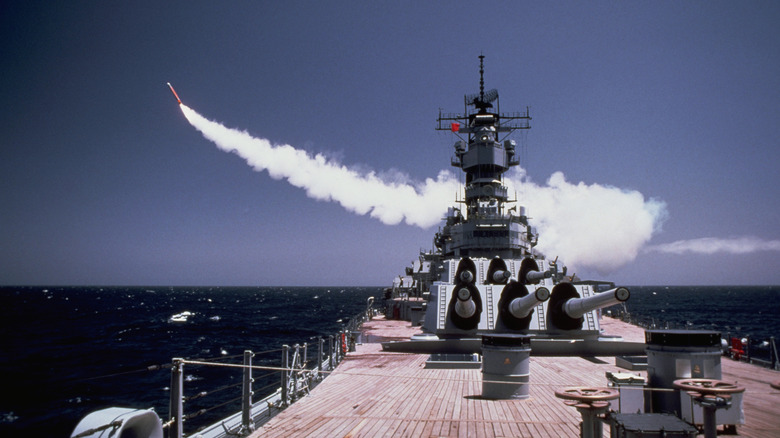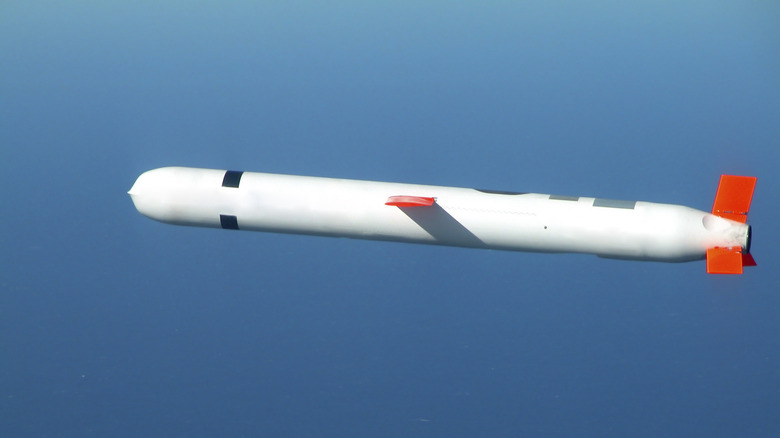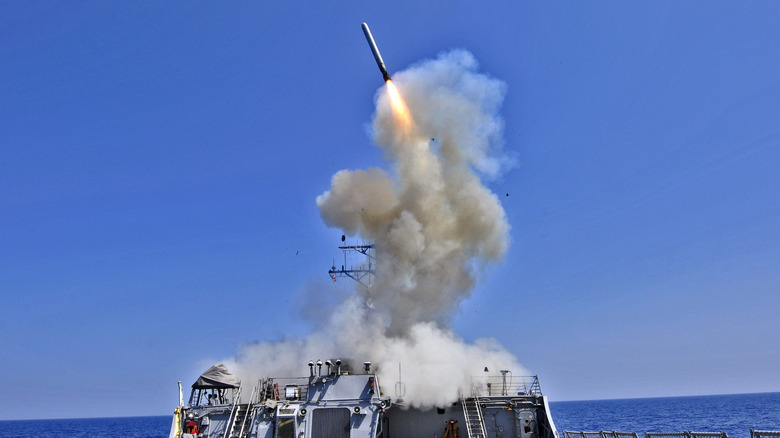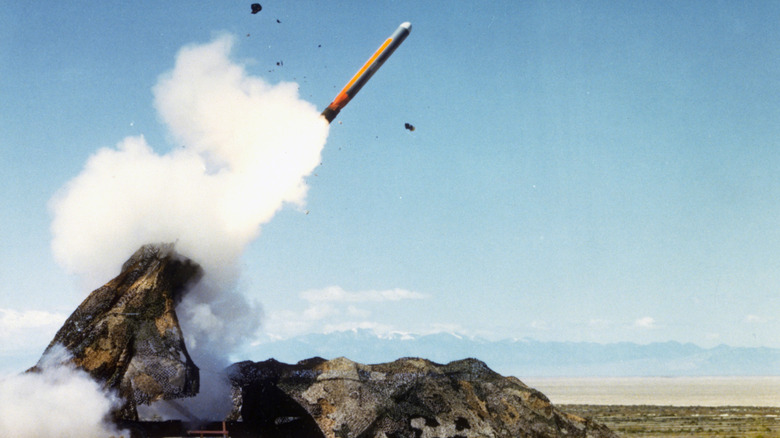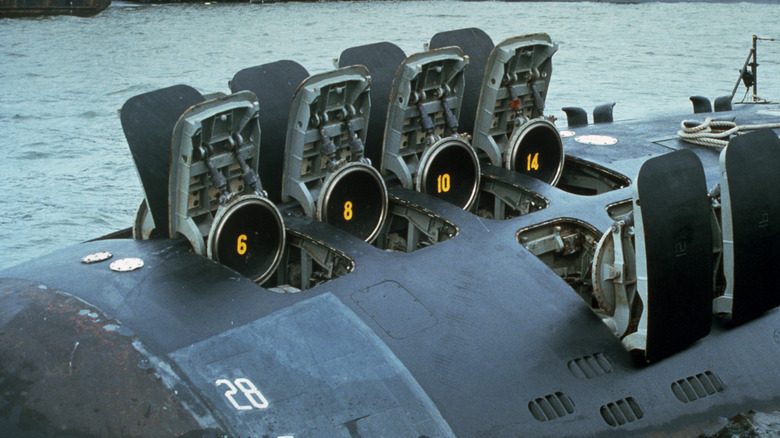Everything To Know About Tomahawk Missiles: Speed, Cost, And Destructive Power
Tomahawk missiles have been world famous since the first Gulf War in 1991 when the United States used the missile against Saddam Hussein's forces in Iraq and Kuwait. Since then, the missile system has been used in nearly every conflict the United States has been involved in, including recent strikes against Houthi rebels in Yemen. Given the weapon's ubiquity, it's worth exploring what exactly a Tomahawk missile is. The United States Navy reports that over 2,300 Tomahawks have been deployed in combat, with that number increasing by the day.
According to the Missile Defense Project from the Center for Strategic and International Studies, the Tomahawk (full name Tomahawk Land Attack Missile) has been in service since 1983 and were first developed for the United States Navy starting in 1972. It was designed to be launched from ships or submarines and was, from the outset, made with nuclear payloads in mind. However, nuclear-armed Tomahawks have not been used in combat and are currently deactivated.
Slow and steady
The Tomahawk missile itself is a 20.3 foot long craft with a wingspan of eight and a half feet, and it weighs 3,330 pounds with all of its components. It's powered by both a rocket booster and turbofan jet engine made by Williams International. According to PBS, the rocket booster engine launches the Tomahawk in the air (hence all the smoke you may see in news broadcasts or photos you see of the missile) and then its jet engine takes the missile the rest of the way to its target.
Despite being powered by rockets and a jet engine, the Tomahawk missile itself isn't that fast, at least comparatively. It reportedly travels at a speed of around 550 miles per hour. An F-16 fighter jet tops out at 1,500 miles per hour and the much larger Minuteman III ballistic missile can reach speeds of up to 15,000 miles per hour. Supposedly, the Tomahawk's relatively low speed helps it avoid radar systems more efficiently. Additionally, it flies at an altitude of between 100 and 300 feet, much lower than conventional fighter aircraft.
Range and power
The actual payload of the Tomahawk can consist of a number of different munitions. But the primary warhead of the Tomahawk is a 1,000-pound high explosive charge. It can also carry cluster munitions consisting of small bomblets, similar to the ATACMS currently used in Ukraine. For explosive force, Tomahawks were more than enough to disable runways or sink ships.
The exact guidance system and navigational dynamics of the Tomahawk missile are classified. However, it is known that it can use GPS or inertial guidance systems to hit the target. Additionally, the U.S. Navy states that up to 15 targets can be pre-programmed for missile salvos. The Tomahawk is capable of "loitering," meaning that, provided the missile has enough fuel, it can fly around in circles to relay information or wait for the right target. It has a range of around 1,500 miles, meaning that the ship or submarine launching the missile is well out of harm's way. It is accurate to within 10 meters.
The Tomahawk's combat history
The Tomahawk is primarily made by Raytheon Missile Systems. According to budget data from the United States Marine Corps from 2022, each Tomahawk costs around $2 million. As of now, the United States and the United Kingdom are the only countries to deploy Tomahawk missiles, although Australia and Japan have put out bids to purchase Tomahawks.
The U.S. Navy states that 140 total craft are capable of launching Tomahawks. That number consists of Ohio-class submarines, Arleigh Burke-class destroyers, and more. The United States Army has also tested launching Tomahawks from ground-based platforms. The USS Missouri, a World War II-era battleship and the very last of its kind, was fitted to fire Tomahawks during the opening salvos of the First Gulf War. It fired a total of 28 cruise missiles, in addition to its 16-inch deck guns.
The submarines USS Louisville and USS Pittsburgh launched Tomahawks in 1991 at targets in Iraq and became the first submarines to fire Tomahawks while submerged.
Several decades of service
Outside of the Gulf War, Tomahawks were used to attack Iraq several more times in the 1990s, against Bosnian targets in 1995, during NATO actions against Yugoslavia, and during the engagements against Afghanistan after 9/11. More recently, Tomahawks saw use in Libya as part of Operation Odyssey Dawn, ISIS in Syria experienced the effects of Tomahawks, and Syrian chemical weapons facilities used by despot Bashar Al-Assad were struck by Tomahawks in 2017. In 2024, both American and British forces launched Tomahawks against Houthi rebels after the rebel group attacked shipping lanes and US-flagged vessels in the Red Sea.
Raytheon reports that the Tomahawk missile could stay in service until at least 2035. By that time, the cruise missile will have eclipsed 50 years of service. With its long range, ability to be launched practically anywhere in the world from above or below the waves, and its accuracy, the Tomahawk has proved literally thousands of times that it is a vital part of the arsenals of the U.S. Navy and the Royal Navy.
